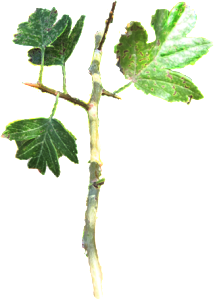Hawthorn
Latin name: Crataegus douglasii, C. columbiana, C. monogyna
Family: Rosaceae
Botany: The NW native hawthorns, Crataegus douglasii and C. columbiana, are both shrubs, C. douglasii being taller than the C. Columbiana.
The common hawthorn, C. monogyna is predominant in urban street plantings and is more tree like, with leaves being deeply lobed (like an oak leaf) with showy white, creamy flowers.
Medicine: Hawthorn is well known as a heart tonic and as a calming nervine. Hawthorn is an extremely safe and gentle medicine, with very little known side effects; the only ones of note are nausea and headache. There are no known drug interactions. In studies, has shown efficacy in alleviating symptoms in folks with early stages of congestive heart failure.
Michael Moore describes it as a slow and gentle medicine, as a mild coronary arterial vasodilator, increasing the blood supply to the heart muscles and lessening the potential for spasms, angina and shortness of breath in older people. Combined with passionflower, Moore says it can gradually lower diastolic blood pressure and quiet the pulse, especially in those with hypertension whose rapid pulse can remain into the evening.
Less well known are the indigenous/first nation uses of this plant for diarrhea and mouth sores.
In traditional Chinese medicine, hawthorn is classified as a digestive herb, especially assisting in digesting meat and stimulating a failed appetite, perfect for the wintertime sluggishness.
As this is a slow medicine, the benefits are reaped with time, a few weeks to a month of taking this, however the benefits are maintained and not temporary.
Harvest: Collect flowers and leaves in the spring for a fresh tincture, or dry and store in glass jar or zip lock bag. Flowers should be pink or white and foul-smelling, not brown or red. The leaves should be bright green.
Collect berries before the frost, otherwise they get squishy. Good quality fruit should be red to dark purple and almost black, especially the C. douglasii. They can be tinctured fresh, or dried for tea, syrup, or used in the miel recipe below. Once dry, the berries keep longer, but they are less potent than the flowering branches. Michael Moore suggests taking the combined fresh berry and flower tincture together.
Nitya Jessica Eisenheim

